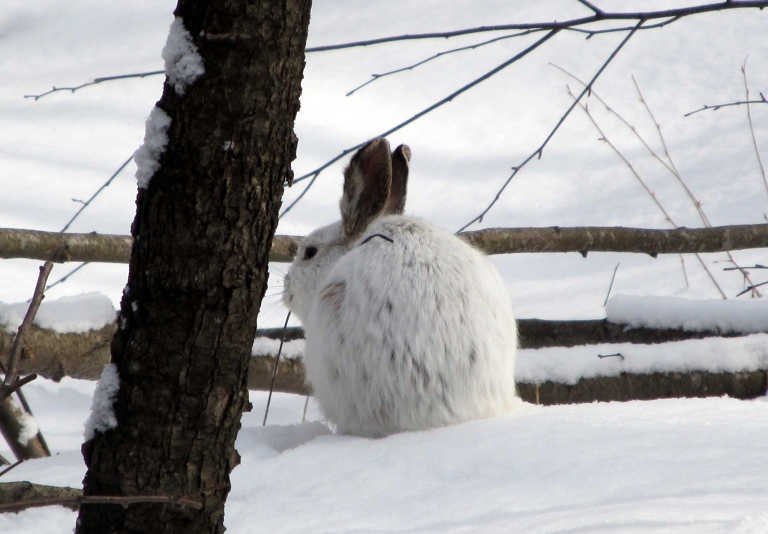MORGANTOWN, W.Va. — Two West Virginia University biologists are scouring the mountains for signs of rabbit and hare life.
Amy Welsh and Chris Rota with the WVU Davis College of Agriculture, Natural Resources, and Design are studying the habits and habitats of two West Virginia lagomorphs—the Appalachian cottontail and the snowshoe hare.
Their research team, which also includes WVU alumni Mack Frantz and Holly Morris, biologists with the West Virginia Division of Natural Resources, is about to begin a collaborative, four-year study.
Domestic lagomorphs in the western U.S. are suffering an outbreak of rabbit hemorrhagic disease virus that has spread into native populations. Biologists here worry that a similar, uncontrollable outbreak might happen in eastern populations.
In response, WVU and the W.Va. DNR are partnering to use non-invasive genetic techniques to study population dynamics and monitor and prepare for a possible disease outbreak.
Both the Appalachian cottontail and snowshoe hare are elusive. Genetic testing often relies on things like hair and scat, and Rota said the team would be taking samples from the field.
“We are going to look for bunny poop,” he said. “From that bunny poop, Amy and her lab will be able to identify individual rabbits and hares.”
Welsh and doctoral student Madison Miller will perform genetic analyses on samples to determine several things.
“The poop tells quite a story,” Welsh said. “We'll start off the genetic analysis by first figuring out what species it was, so we can differentiate between the different types of cottontails and confirm that it's a cottontail versus a hare.
"And then we do individual ID on the poop. We use enough genetic markers so that we can get a DNA fingerprint from the sample.”
The team hopes to find more small, isolated pockets of both cottontails and hares. Data will help determine how dense individuals are within an area and identify habitat characteristics. The samples also provide Welsh’s lab with data on issues of concern.
“We can also do disease testing on the poop,” Welsh said. “It will tell a big story. And we'll be able to see if there's hybridization happening in West Virginia. We’ll be able to ask a lot of cool questions based on the data.”
Appalachian cottontails live at high elevations, in northern hardwood forests with a dense cover of blueberries and heath-like plants. Populations have become smaller and more isolated, leaving them vulnerable to climate change and extreme weather events. They’re also threatened by the more competitive and widespread eastern cottontail, and researchers are concerned about hybridization between them.
The snowshoe hare component of the study will focus on filling in knowledge gaps about the species. West Virginia is at the southern extreme of the animals’ range, and they live at high elevations, mainly in Tucker, Randolph, and Pocahontas counties.
When the lab has identified individual animals from the samples, Rota, a quantitative ecologist, will help with the data analysis. The DNR can then use the information to shape habitat management practices to better aid lagomorph populations and ensure they’re not so isolated.
“It's really a collaborative project,” Rota said. “You can see that we've got diverse expertise here. We've got the species expertise from Mack, the habitat and regulation with Holly, Amy with genetics, and then me with the design and statistics.”
In that vein, WVU researchers have a long history with the division.
“It’s an important element,” Welsh said. “We love collaborating with DNR, answering questions that are management-related, and then I love helping them figure out what to do with the collected data.
"It’s about how we can help make management decisions that will benefit the people of West Virginia as well as the species. That's another fun element of it, too.”
Laura Roberts, a research writer with WVU Research Communications, contributed this story. (laura.roberts@
Sign up to receive a FREE copy of West Virginia Explorer Magazine in your email weekly. Sign me up!





























